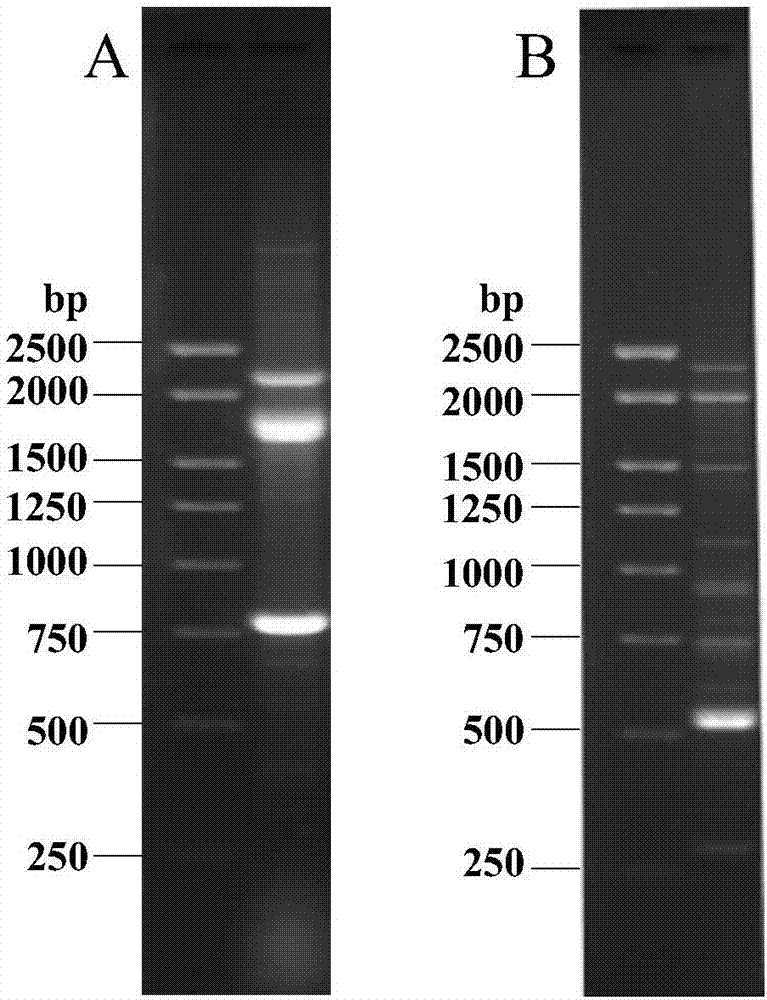Xanthomonas campestris and application thereof
A technology of Xanthomonas and rape, applied to Xanthomonas rape and its application field, can solve problems such as easy volatility, and achieve the effect of highly active glycosyltransferase activity
- Summary
- Abstract
- Description
- Claims
- Application Information
AI Technical Summary
Problems solved by technology
Method used
Image
Examples
Embodiment 1
[0018] The screening of embodiment 1 xanthomonas campestris
[0019] Take 10g of diseased and rotten wild rapeseed leaves, directly add it to 50mL of normal saline, place it on a shaker for 30min, dilute the suspension with a gradient of normal saline, and spread it on a semi-selective NSCA medium (starch 15g / L , nutrient agar powder 23g / L, cycloheximide 100mg / L, solvent is distilled water, pH value is natural) plate, 28 ℃ aerobic culture for 48h. Pick a single colony with light yellow convex mucus and repeatedly streak and separate it on the NSCA plate, and repeat three times to obtain the purified strain IFE008 for the next step of identification.
[0020] Morphological observation:
[0021] 1) Observation of colony characteristics: observe directly with the naked eye, and select colonies with a diameter between 2 and 4 mm, smooth surface, light yellow convex mucus, etc., which conform to the morphological characteristics of Xanthomonas campestris colonies. 2) Stretch onto...
Embodiment 2
[0023] M13-PCR and BOX-PCR Fingerprint Amplification of Example 2 Xanthomonas campestris CGMCC No.13990
[0024] BOX-PCR fingerprint amplification: Inoculate -80°C glycerol stock solution in NGA medium with a volume concentration of 1-2% inoculum, and culture at 28°C for 24 hours with shaking. Take an appropriate amount of culture solution and centrifuge for 2 min (4000 rpm, 4°C), discard the supernatant to obtain an appropriate amount of bacterial cells, and use a bacterial genome extraction kit to extract genomic DNA. PCR amplification was performed using BOX primers (CTACGGCAAGGCGACGCTGACG). The reaction system is: Mg 2+The concentration of the primer is 3.0mmol / L, the primer concentration is 1.0μmol / L, the DNA template concentration is 4.8ng / μL-0.48ng / μL, the concentration of each nucleotide is 200μmol / L, and the amount of TaqDNA polymerase added is 2.5U / 25 μL. The PCR reaction program was: 94°C for 3min, 53°C for 2min, 72°C for 3min, and then entered the following cyc...
Embodiment 3
[0026] Example 3 Xanthomonas campestris CGMCC No.13990 cells catalyze the production of α-arbutin from hydroquinone
[0027] The medium used in this experiment is MPY medium: maltose 50.0g / L, yeast powder 2.0g / L, peptone 10.0g / L, MgSO 4 ·7H 2 O1.0g / L, the solvent is distilled water, pH7.0.
[0028] The -80°C glycerol stock solution was taken at a volume concentration of 1% inoculum, directly inoculated into fresh MPY liquid medium, and cultured on a shaker at 30°C for 24 hours with a rotation speed of 180 rpm. Then transfer the inoculum to fresh MPY liquid medium with a volume concentration of 2%, culture on a shaker at 30° C. and 180 rpm for 18-20 hours, and collect wet bacterial cells by centrifugation for glycosylation reaction of hydroquinone.
[0029] Take 500mL of Xanthomonas campestris IFE008 cells collected by centrifugation, freeze-dry with liquid nitrogen; take 5g of freeze-dried cells and dissolve them in 500ml of boric acid buffer (pH8.0); directly add 400g of ma...
PUM
 Login to View More
Login to View More Abstract
Description
Claims
Application Information
 Login to View More
Login to View More - R&D
- Intellectual Property
- Life Sciences
- Materials
- Tech Scout
- Unparalleled Data Quality
- Higher Quality Content
- 60% Fewer Hallucinations
Browse by: Latest US Patents, China's latest patents, Technical Efficacy Thesaurus, Application Domain, Technology Topic, Popular Technical Reports.
© 2025 PatSnap. All rights reserved.Legal|Privacy policy|Modern Slavery Act Transparency Statement|Sitemap|About US| Contact US: help@patsnap.com

